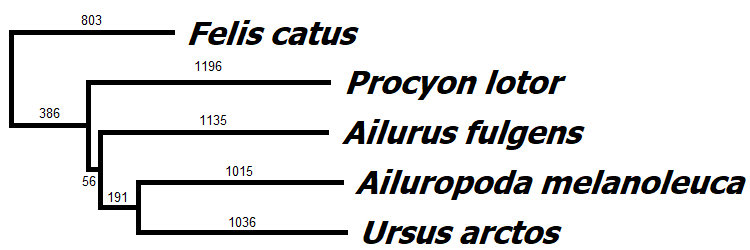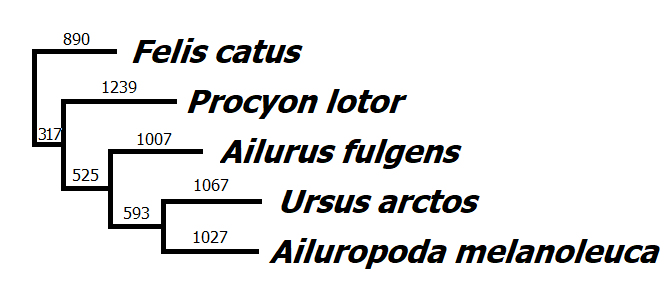UPGMA
Neighbor Joining rooted
Neighbor Joining (unrooted)
Maximum Parsimony
Maximum Likelihood 
Figures & Text ©2024 by Steven M. Carr
Alternative
phylogenetic methods applied to a five-taxon problem:
Is
the Giant Panda (Ailuropoda)
more closely related to the Red Panda (Ailurus)
or the Brown Bear (Ursus)?
(1) UPGMA
phenogram, equality of branch lengths assumed, (2) Neighbor-Joining,
with inferred distances along each branch, (3) NJ
Radiation phenogram, without implicit rooting, (4) Maximum
Parsimony, with inferred number of SNP changes
along each branch, and (5) Maximum Likelihood, with probabilities
of changes along each branch.
Figures 2,
4, & 5 are rooted with Felis,
which is known to be in a different suborder than the others.
Comparing the UPGMA and NJ phenograms, note
that the lengths of the internal branches are approximately the
same, as are the terminal branches. The length of the Felis
branch is 803 + 386 = 1189,
which is about the same as the Procyon branch.
Note that the UPGMA, NJ rooted and unrooted
networks have the same topology. Note that NJ distances
and MP numbers are roughly the same values
on terminal branches, but internal branches are quite different.
All methods
agree, that the Giant Panda is more closely related to Ursus
than to the Red Panda.
UPGMA
Neighbor Joining rooted
Neighbor Joining (unrooted)
Maximum Parsimony
Maximum Likelihood 